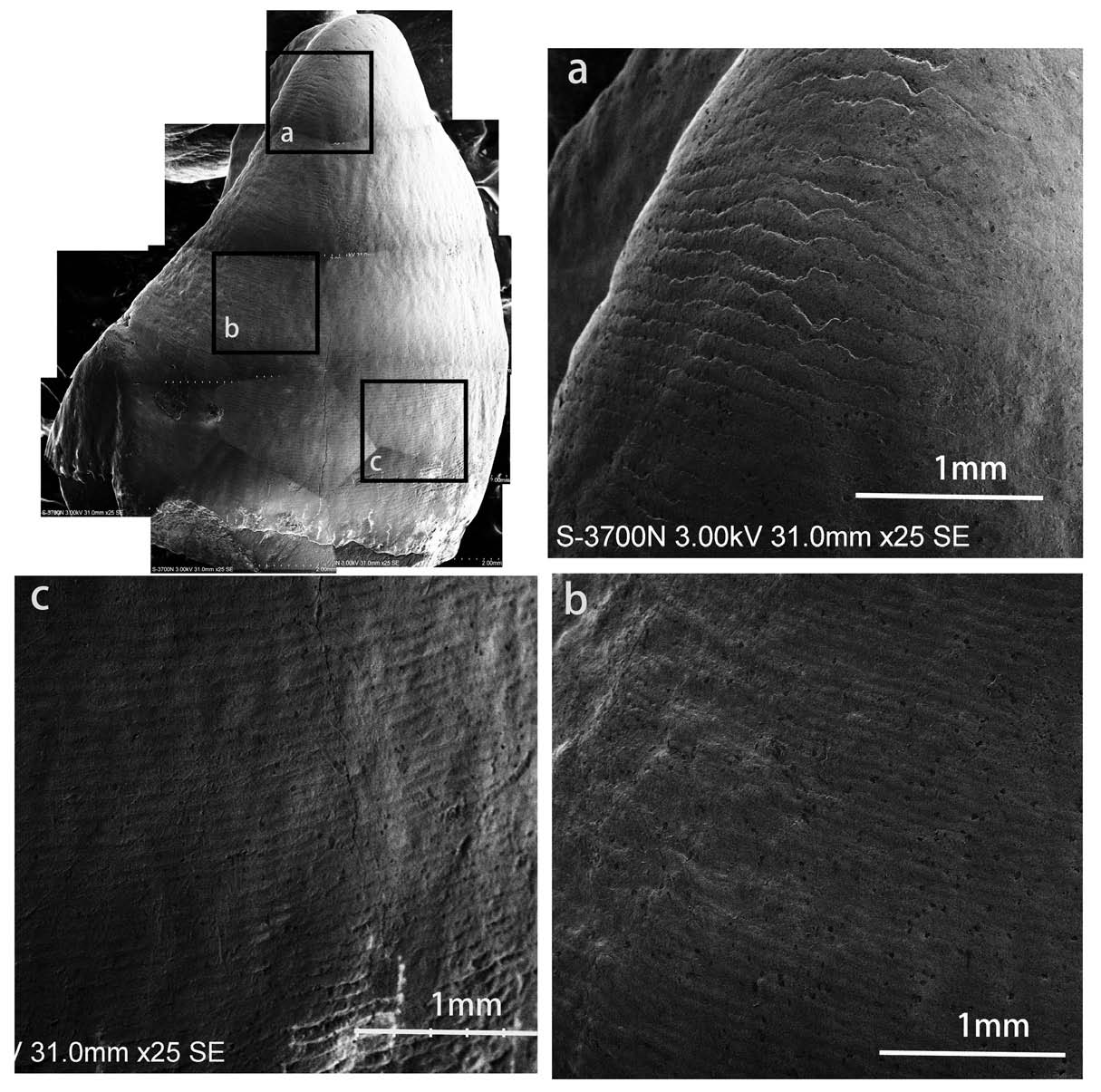New advance on Crown Formation Time of Anterior Teeth of Fossil Orangutan from South China
Perikymata are typical enamel growth markings of anterior teeth, and their spacing pattern and total counts can provide helpful information on dental development and life history. Recently, researchers from
Lingxia Zhao and Rong Hu observed and analyzed perikymata spacing pattern and counts of anterior teeth of fossil orangutans by scanning electron microscopy. By dividing tooth crown into three equal parts: cuspal, middle and cervical, the density of perikymata in cuspal third is lower than 10/mm, and there is no significant difference between the middle and cervical third, counting about 10-15/mm. Total numbers of perikymata counts are more in the upper central incisor than in the upper lateral incisor, more in canines than in incisors, and more in male canines than in female canines.
Referring to the cuspal enamel formation time of anterior teeth in extant apes, Lingxia Zhao and Rong Hu estimated that these formation times in incisors and canines of fossil orangutans were 0.5 year and 1.0 year, respectively. Lateral enamel formation time equals perikymata counts multiplied by nine-day periodicity of the Retzius line (which is very popular in our section analysis on molars). According to cuspal and lateral enamel formation times, they estimated that the incisor crown formation time was about 2.97-6.66 years. Canine crown formation times of male orangutans from
“Compared with some fossil large apes, Australopithecus and Paranthropus, early Homo, Homo sapiens and extant apes, perikymata spacing of anterior teeth of orangutans from South China is more dense than that of Australopithecus and Paranthropus, and less than that of African apes, Homo sapiens and Lufengpithecus lufengensis”, said Zhao. Except for the upper lateral incisor, perikymata counts of anterior teeth of fossil orangutan are similar to extant great apes, and greater than Australopithecus, Paranthropus, and early Homo. Crown formation times of these orangutan teeth was much longer than Proconsul, Australopithecus and Paranthropus, and closer to extant African apes, Lufengpithecus lufengensis and modern orangutan, especially.

Perikymata of a lower canine of fossil orangutan from South China
Download attachments: